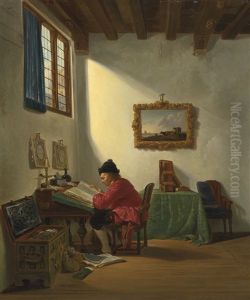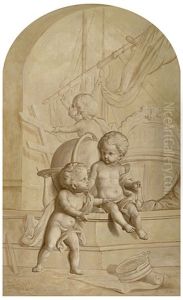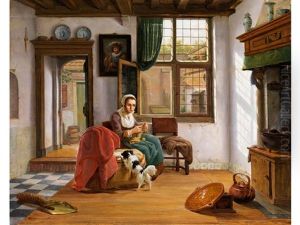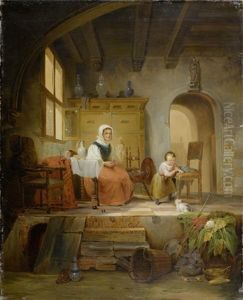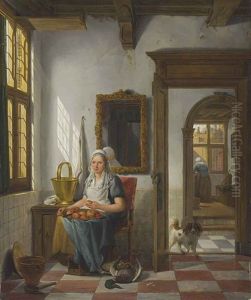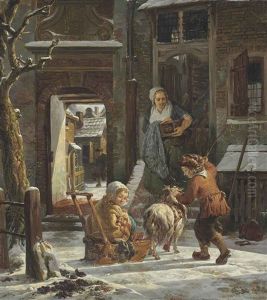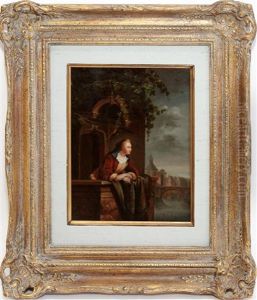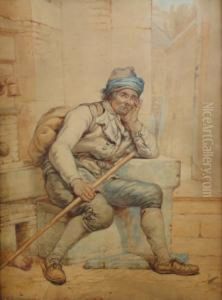Abraham Ii Van Stry Paintings
Abraham II van Stry was a Dutch painter born on October 30, 1753, in Leiden, the Netherlands. He was part of a family of painters; his father, Jacob van Stry (1727–1804), was also a painter, as was his brother, Jacobus van Stry (1756–1815). The van Stry family was well known for their contributions to Dutch art, particularly for their landscapes and animal paintings during the 18th and early 19th centuries.
Abraham II van Stry initially received his artistic training from his father, which was a common practice of the time for artistic families. He further developed his skills and was influenced by the works of 17th-century Dutch masters, as the Golden Age of Dutch painting had a long-lasting impact on artists of subsequent generations. Van Stry's work often reflected a pastoral sensibility, with a focus on bucolic landscapes, domestic animals, and genre scenes that captured everyday life.
Throughout his career, Abraham II van Stry enjoyed a modest level of success and was respected by his contemporaries. However, he did not achieve the same level of fame as some of his predecessors, such as Rembrandt or Vermeer. His paintings were characterized by their attention to detail, use of light, and the tranquil mood they conveyed. He worked during a period of art history where there was a transition from Rococo to Neoclassicism, and his works sometimes reflect the stylistic characteristics of both movements.
Van Stry lived and worked in a time of great change, both politically and culturally, as the Netherlands underwent significant transformations during the late 18th century and the Napoleonic era. Despite the turbulent times, van Stry continued to produce art that adhered to traditional Dutch themes and styles. His works have been collected and appreciated by art connoisseurs, particularly those with an interest in Dutch landscape and genre painting.
Abraham II van Stry passed away on February 24, 1826, in Leiden. Though he is not as widely recognized today as some of his contemporaries, his paintings still contribute to the rich tapestry of Dutch art history and are held in both private collections and museums. They serve as a testament to the enduring appeal of the Dutch landscape genre and the artistic legacy of the van Stry family.
